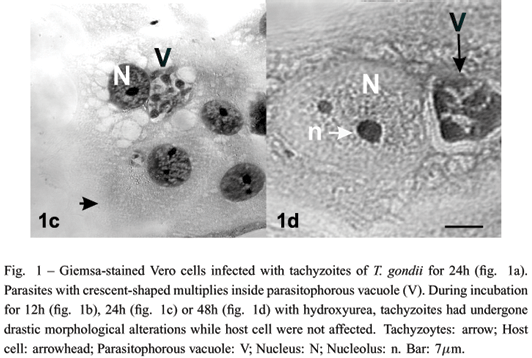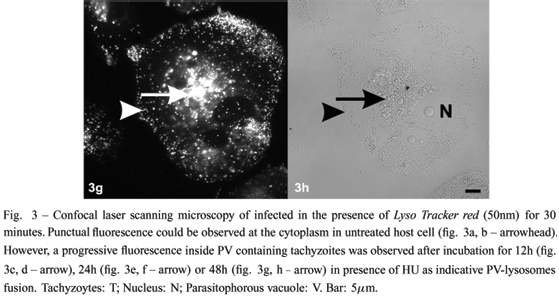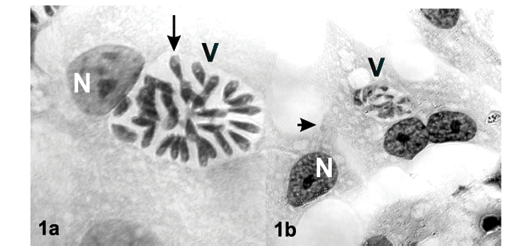Toxoplasma gondii multiplies within parasitophorous vacuole that is not recognized by the primary no oxidative defense of host cells, mainly represented by the fusion with acidic organelles. Recent studies have already shown that hydroxyurea arrested the intracellular parasites leading to its destruction. In the present work we investigated the cellular mechanism involved in the destruction of intracellular Toxoplasma gondii. Fluorescent vital stains were used in order to observe possible acidification of parasitophorous vacuole-containing Toxoplasma gondii in presence of hydroxyurea. Vero cells infected with tachyzoites were treated with hydroxyurea for 12, 24 or 48 hours. Fluorescence, indicative of acidification, was observed in the parasitophorous vacuole when the cultures were incubated in presence of acridine orange. LysoTracker red was used in order to determine whether lysosomes were involved in the acidification process. An intense fluorescence was observed after 12 and 24 hours of incubation with hydroxyurea, achieving it is highly intensity after 48 hours of treatment. Ultrastructural cytochemistry for localization of the acid phosphatase lysosomal enzyme was realized. Treated infected cultures showed reaction product in vesicles fusing with vacuole or associated with intravacuolar parasites. These results suggest that fusion with lysosomes and acidification of parasitophorous vacuole leads to parasites destruction in the presence pf hydroxyurea.
Hydroxyurea; Toxoplasma gondii; parasitophorous vacuole











